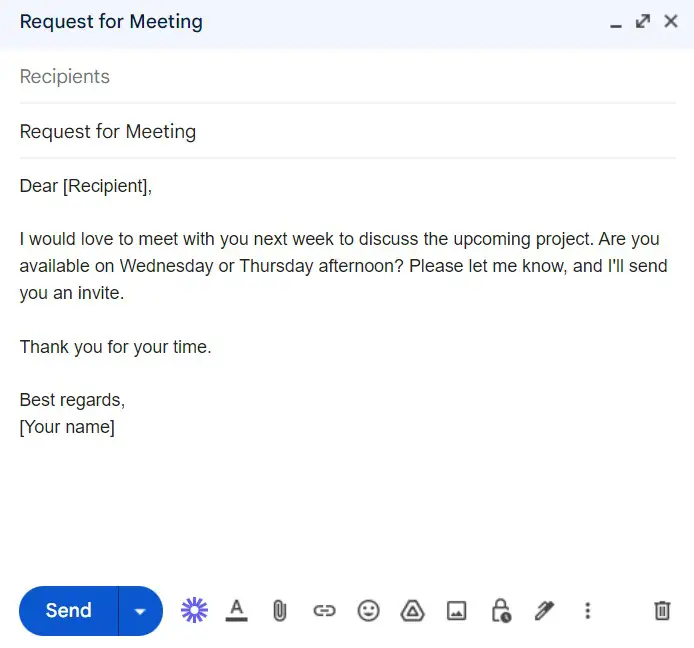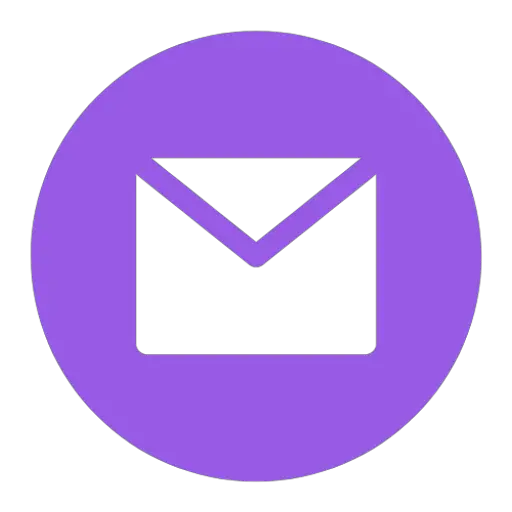Email communication is an essential aspect of professional life. It’s crucial to know how to convey your message in a clear and effective manner while maintaining a professional tone.
One phrase that can help you achieve this is “I would love to.”
In this article, we will explore how to use this phrase in your emails, provide examples, and offer alternative phrases that you can use to maintain a professional tone.
Contents
- How to Use “I Would Love to” in an Email
- “I Would Love to” Email Examples
- Example 1 – Subject: Request for Meeting
- Example 2 – Subject: Job Application Follow-Up
- Example 3 – Subject: Thank You Note
- Example 4 – Subject: Networking Request
- Example 5 – Subject: Referral Request
- Example 6 – Subject: Collaborative Opportunity
- Example 7 – Subject: Congratulations
- Example 8 – Subject: Appreciation
- Example 9 – Subject: Invitation Acceptance
- Example 10 – Subject: Feedback Request
- Professional Ways to Say “I Would Love to” in an Email
How to Use “I Would Love to” in an Email
“I would love to” is a polite and positive phrase that can help you express your enthusiasm and interest in a particular subject in your emails.
Here are some tips on how to use this phrase effectively:
1. Use it to express interest or enthusiasm: You can use this phrase to express your excitement or interest in a particular event, opportunity, or project. For example, “I would love to attend the upcoming conference” or “I would love to contribute to the new project.”
2. Use it to show appreciation: You can also use this phrase to show gratitude and appreciation towards someone. For example, “I would love to thank you for your support” or “I would love to acknowledge your efforts.”
3. Use it to offer help: You can use this phrase to offer assistance or help to someone. For example, “I would love to assist you with the project” or “I would love to help you with your presentation.”
When using “I would love to” in your emails, it’s important to ensure that it aligns with your message’s intent and maintains a professional tone. Avoid using this phrase excessively or in inappropriate settings, as it may come across as insincere or unprofessional.
“I Would Love to” Email Examples
Example 1 – Subject: Request for Meeting
Dear [Recipient],
I would love to meet with you next week to discuss the upcoming project. Are you available on Wednesday or Thursday afternoon? Please let me know, and I’ll send you an invite.
Thank you for your time.
Best regards,
[Your name]
Example 2 – Subject: Job Application Follow-Up
Dear [Recipient],
I hope this email finds you well. I wanted to follow up on the job application I submitted last week. I would love to know if there have been any updates regarding the position.
Thank you for your time.
Best regards,
[Your name]
Example 3 – Subject: Thank You Note
Dear [Recipient],
I wanted to take a moment to thank you for your help on the project. I would love to return the favor in any way possible. Please let me know if you need assistance with anything.
Best regards,
[Your name]
Example 4 – Subject: Networking Request
Dear [Recipient],
I came across your profile on LinkedIn and would love to connect with you. I’m interested in learning more about your work and industry. Would you be open to a virtual coffee meeting next week?
Thank you for your time.
Best regards,
[Your name]
Example 5 – Subject: Referral Request
Dear [Recipient],
I hope this email finds you well. I would love to request a referral from you for the job position I’m applying for. I have attached my resume and cover letter to this email for your reference.
Thank you for your time.
Best regards,
[Your name]
Example 6 – Subject: Collaborative Opportunity
Dear [Recipient],
I came across your work and would love to explore the possibility of collaborating with you on a project. Are you available for a call next week to discuss this further?
Thank you for your time.
Best regards,
[Your name]
Example 7 – Subject: Congratulations
Dear [Recipient],
I wanted to extend my congratulations on your recent promotion. I would love to catch up with you and learn more about your new role.
Thank you for your time.
Best regards,
[Your name]
Example 8 – Subject: Appreciation
Dear [Recipient],
I wanted to express my gratitude for your excellent customer service. I appreciate your attention to detail and timely response. I would love to provide feedback to your supervisor to acknowledge your efforts.
Thank you for your time.
Best regards,
[Your name]
Example 9 – Subject: Invitation Acceptance
Dear [Recipient],
Thank you for the invitation to your company’s anniversary celebration. I would love to attend and celebrate this milestone with you. Please let me know if I need to RSVP or bring anything along.
Thank you for your time.
Best regards,
[Your name]
Example 10 – Subject: Feedback Request
Dear [Recipient],
I hope this email finds you well. I would love to request feedback on the recent presentation I gave. Your input would be valuable in helping me improve my skills for future presentations.
Thank you for your time.
Best regards,
[Your name]
Professional Ways to Say “I Would Love to” in an Email
While “I would love to” is a polite phrase, it may not always be suitable for professional settings. Here are some alternative phrases that you can use:
- I would be delighted to
- I am interested in
- I am looking forward to
- I am excited to
- I am eager to
Using these phrases instead of “I would love to” can help you maintain a professional tone while still expressing your enthusiasm.
In conclusion, using the phrase “I would love to” in your emails can help you convey your emotions effectively.
With the provided examples and alternative phrases, you can improve your email communication skills and create a lasting impression on your recipient.
Remember to be mindful of your tone and ensure that it aligns with your message’s intent.


